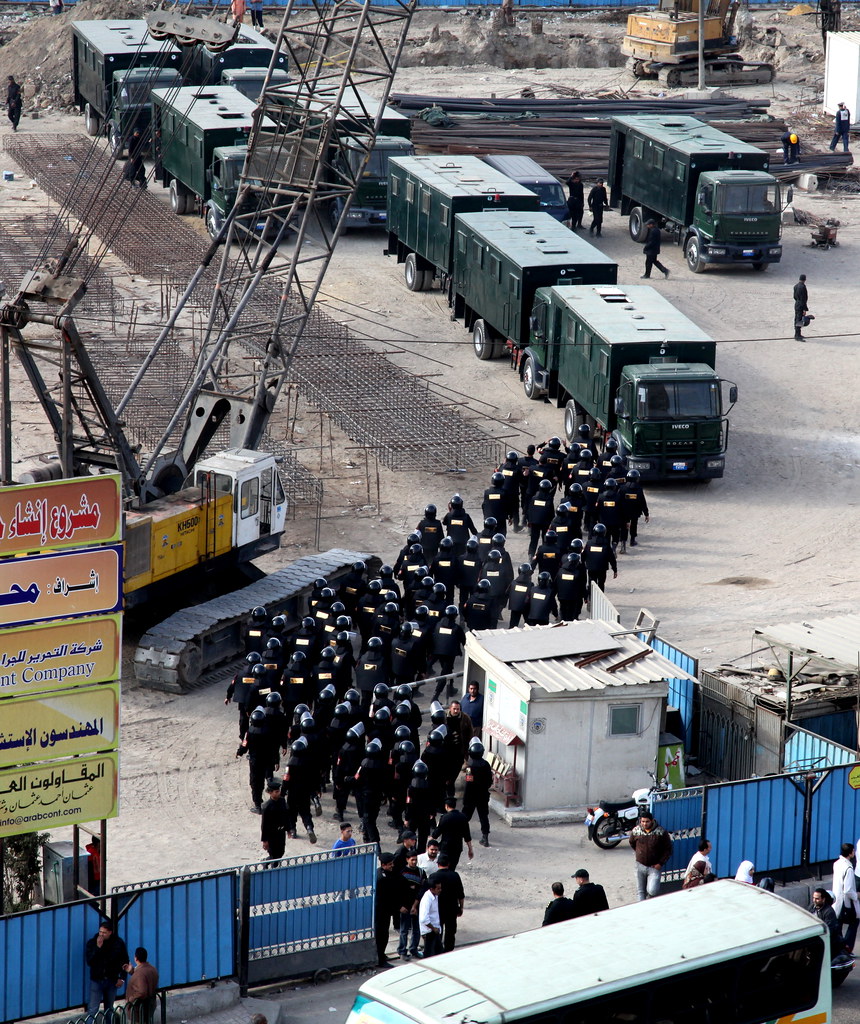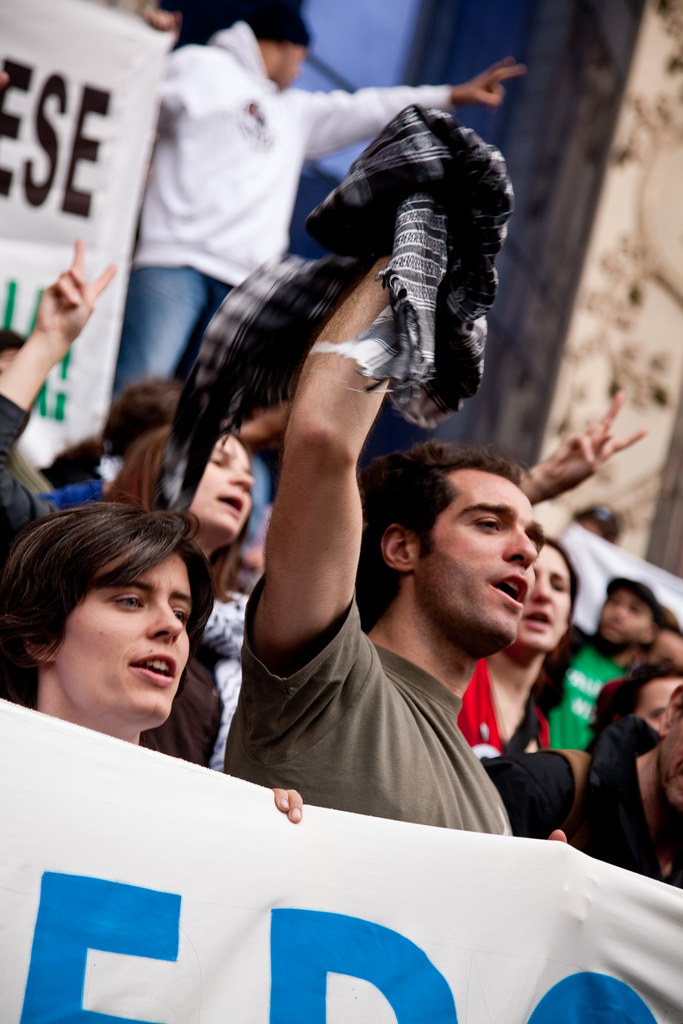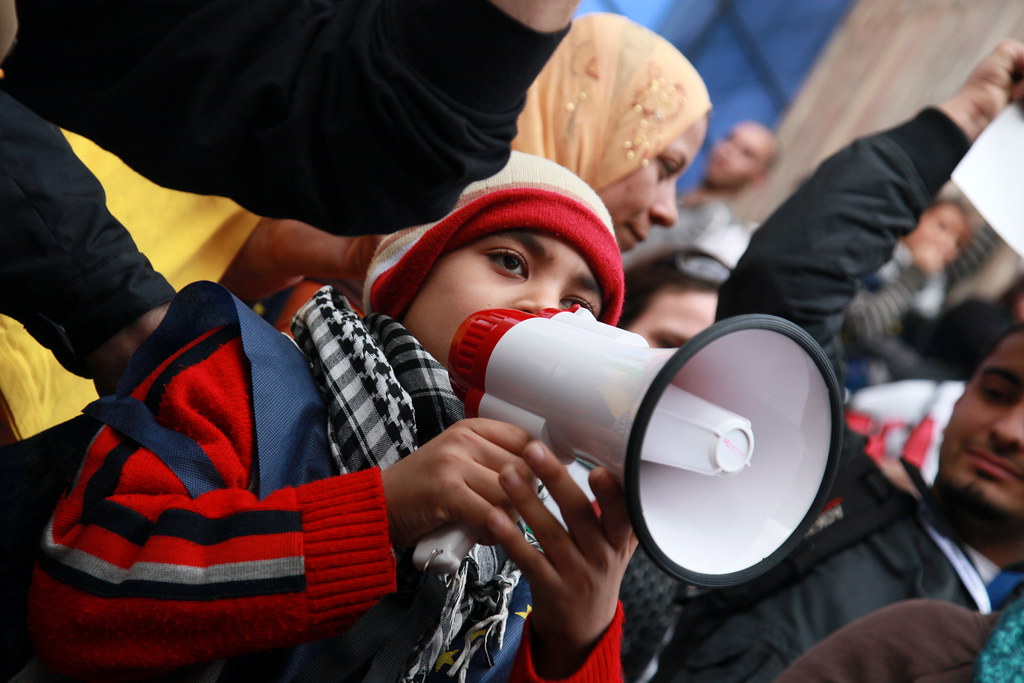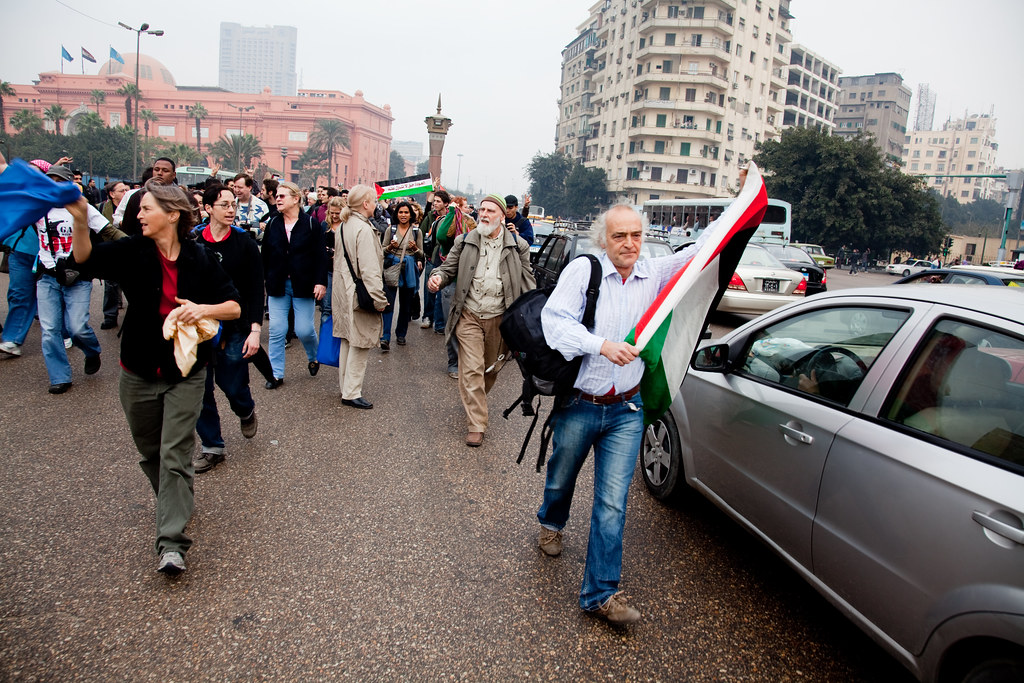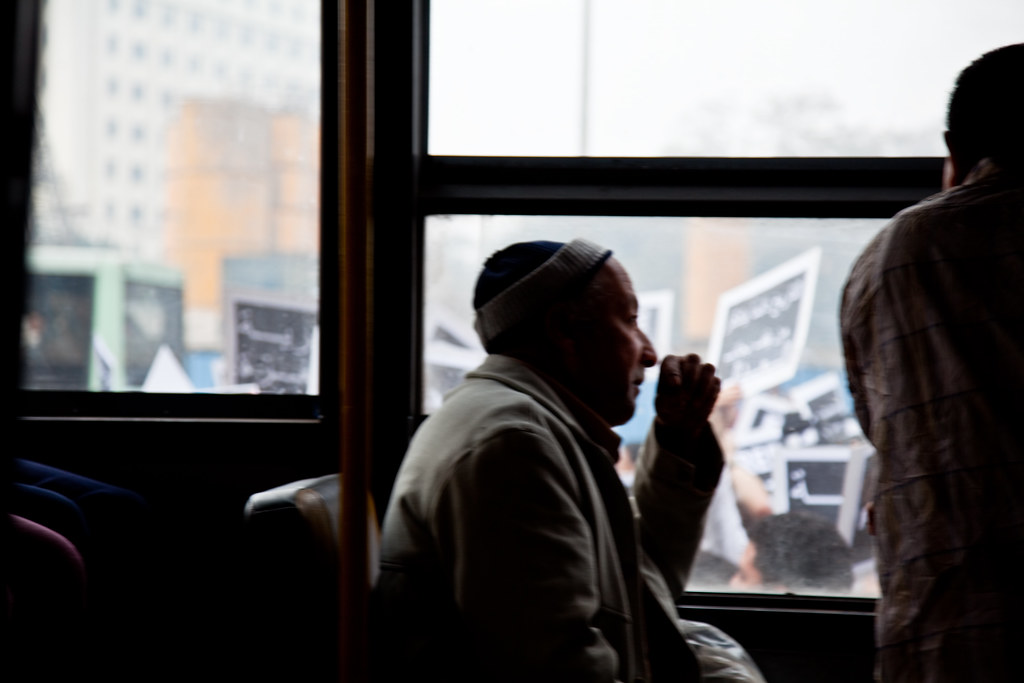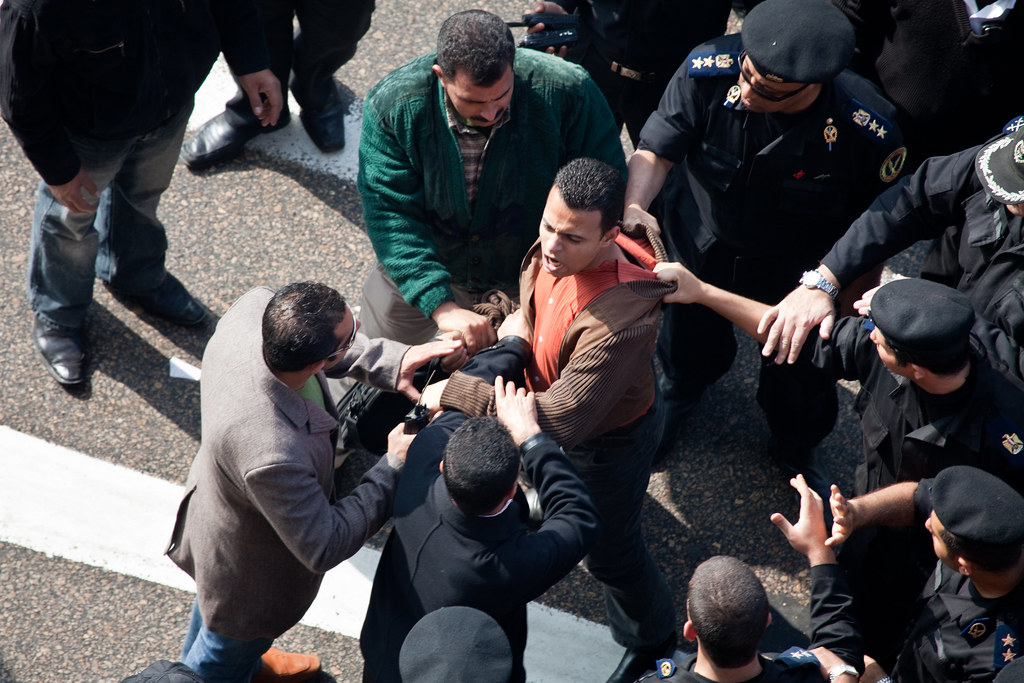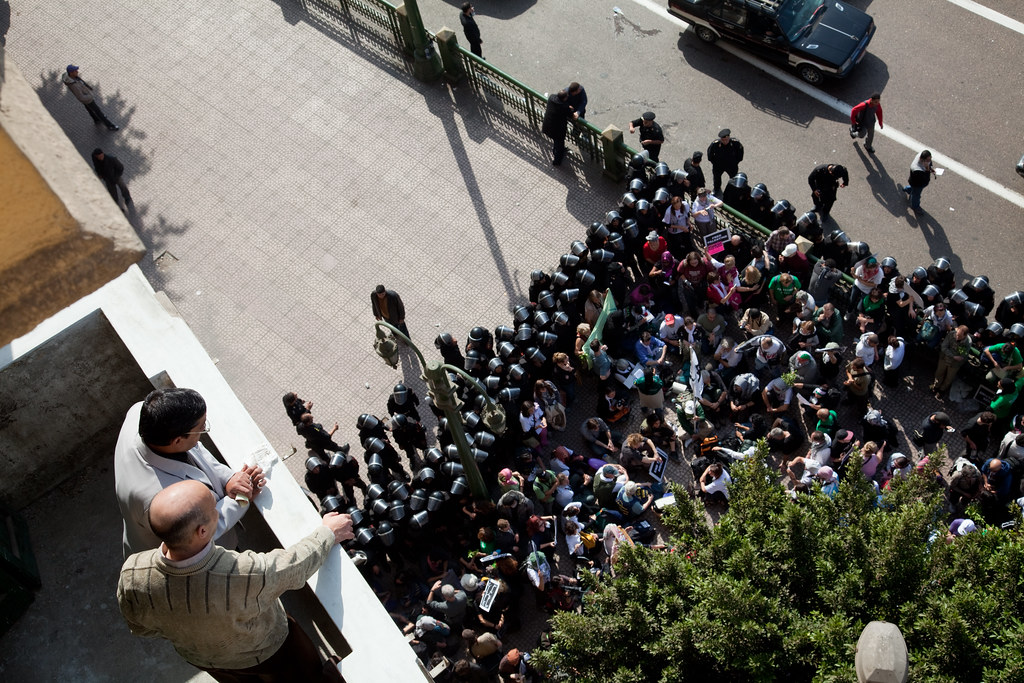In December, I headed off to Egypt to join the Gaza Freedom March alongside another 1300 marchers. The initial plan was to head into Gaza to march in solidarity with the Palestinians on the anniversary of the 2008 bombing, to protest the conditions of the occupation and the construction of a massive steel wall to completely seal off the underground smuggling routes. While those routes are admittedly also used for smuggling weapons, they had been the only means for getting medicine, food, construction supplies, and goods for the local market into the Gaza strip region.
In hindsight I might have been naive in expecting that we'd be allowed into Gaza, but I felt that this was something that I needed to at least attempt. Through the Couchsurfing website I had managed to get in contact with a few politically active Palestinians, and was invited to visit the homes of a couple families. I wanted to hear their individual perspectives on the political history of the region, learn about their individual struggles and have the chance to be with them as they went about their daily lives.
However, that is not how the first couple weeks of the trip went.
While we had received tentative approval for the March by the Egyptian and Israeli authorities before buying our air tickets, we soon learned that any such approval had been revoked when the Egyptian military police cordoned-off our bay-side gathering on the first night. They announced over megaphone that any foreigners who pass the cordon would be be considered as participants in an illegal march.
Being cordoned off by police patrols, it was hard to move along the river front. We had planned to board feluca sailboats to hold a candlelight vigil on the Nile, but were informed that the boats had also been cordoned off at a far-off pier and were blocked by the police. We still held a candlelight vigil, but since the roads were cut-off and we had been surrounded, the media had little chance to record the event and no locals were able to see the protest.
Over the next two weeks, this would become a recurring theme to the March.
In follow-up protests, there were members from all walks of life who joined in the March. In front of the Journalist's syndicate a young boy gave a speech. He was Palestinian and born and raised in a refugee camp, but had never been able to visit his homeland. He had joined the march with his parents in the hope of visiting his relatives and to see the remains of the home where his Father grew up.
The next stage of protest was quite dangerous. Hedy Epstein, an 85 year old Holocaust survivor and peace activist, began a hunger strike that was joined by many of the demonstrators. I had always heard about people partaking in hunger strikes, but never realized how dangerous they are, until meeting people going into the 3rd and 4th days of their strike. In the following photo, people are going into the second day of their hunger strikes. Over the days to come they began to look ill, their skin became paler and their faces became pockmarked. I tried talking with them to learn about their motivation for joining the cause, but they had become delirious. I and many others were seriously concerned for the health of Mrs. Epstein, but she was adamant in continuing her strike. She continued until the doctor forced her to stop, and she had to be fed through an IV. Although I can't say I have the willpower to endure a hunger strike myself, this experience helped me to understand the power of the convictions held by Mother Theresa and Mahatma Gandhi.
After a week of secret meetings, mysteriously coded phone messages and dozens of aborted plans, on New Year's Eve, we held our largest protest in front of the Egyptian Museum. On streets overrun by secret police, several hundred protesters pretended to be tourists visiting the various tourist traps downtown. So did dozens and dozens of secret police. It was obvious who they were though. Wearing leather jackets and holding faux-guidebooks; the 6+ foot statures, muscular frames and unnaturally forced questions to bystanders gave them away.
The New Year's Day protest held in front of the Egyptian History Museum, blocked off a major traffic artery for downtown Cairo.
The New Year's Eve protest finally drew some attention to the cause.
Locals in buses and in stopped cars were able to see the signs. However, a lack of proficiency in Egyptian Arabic meant that our messages were not clearly conveyed.
The military police were pushy and resorted to occasional violence to shut down the protest as quickly as possible.
After reinforcements arrived, the police far outnumbered the protesters.
In the end though, it's debatable how many people actually heard the messages of the protesters. Since few statements were prepared in the local language, and local participation was limited to lawyers and journalists, I'm disappointed to report that our actions came to feel like an imported 'protest for protest's sake.' I am very supportive of grassroots protests, but came to feel that this one was too forced and removed from local political movements. In the future I will work harder to document the actions of local protests, especially those by ethnic minorities, and those with more grassroots support by the local population. Thank you for reading this far. :D

